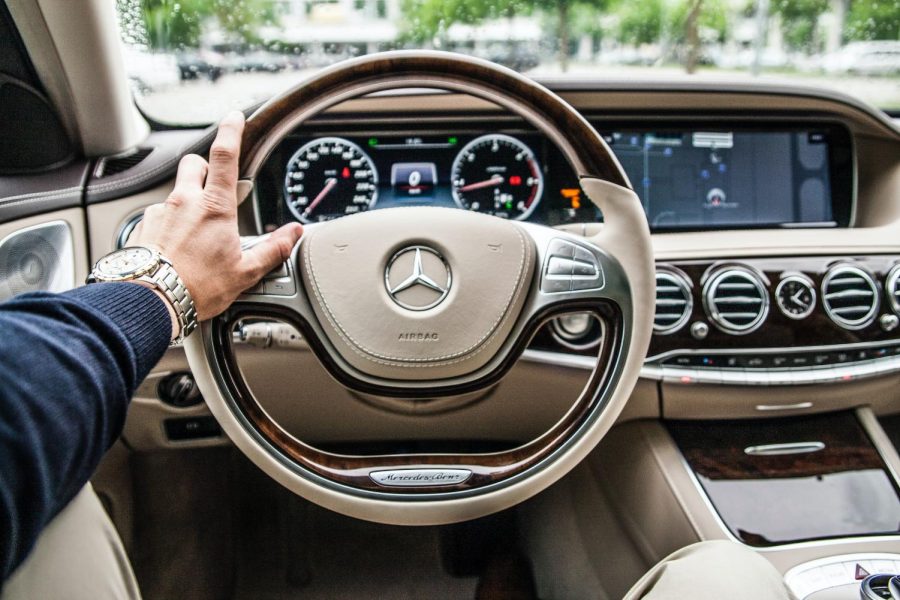Innovation and Regulation in the Car Industry: New Drivers Beware
New technologies within automobiles need to be regulated Innovation is inevitable. No matter how “set in stone” life may be, innovation always comes along to shake things up, and our modern world is no different.
May 4, 2021
Automotive companies have been making major innovations in the way they implement technology into cars; it’s hard to find a car today that doesn’t have some computer aspect to it. With many LHS students getting their licenses, it is important they’re aware of these new innovations.
Despite these innovations, it is the government’s responsibility to regulate new technologies implemented in automobiles in order to protect consumers from innovations such as entertainment systems, U-shaped wheels, computers and sensors, and air taxis.
Though innovative, companies do not always hold consumers’ safety as their top priority. Take, for example, the recent partnership between Ford and Google.
Experts from across the industry, such as Paul Eisenstein, explain that the partnership was “meant to ‘reinvent’ virtually every aspect of the car business, from the way vehicles are designed, engineered and assembled to the way customers shop and then experience their vehicles.”
At first glance, this may seem like a good thing — in some ways it is— but it also poses numerous risks to consumers. For example, Ford will collect data about consumers from their cars. This data could be used against the consumers by the corporation, such as in advertising, or could be hacked, putting the consumer’s privacy and safety at risk.
LHS Junior Aaron Picard said that he wouldn’t mind companies collecting his driving information “as long as it’s being put towards something useful like understanding the average driver to better safety measures within future cars’ development.”
Additionally, their partnership with Google will introduce wireless systems that allow consumers to stream entertainment content. Texting while driving is a huge distraction on its own, causing 1.6 million crashes per year, but streaming entertainment will only further distract drivers with noise and visuals and lead to more accidents.
Aaron added that he thought it would be distracting for many people but not himself “as long as the majority of the functions only work while parked.”
The government must pass legislation to protect consumers from companies using their information against them along with putting regulations on the entertainment they’re allowed to use in the car. Without these essential regulations, consumers would fall victim to these companies and their technology-dependent cars.
Another problem that the implementation of technology into vehicles poses is a question of the practicality and legality of the technology. More often than not, laws need to catch up to modern society, and Tesla’s new steering wheel is no different.
The stalkless and U-shaped steering wheel is filled with sensors that are capable of guessing the driver’s direction. This gizmo is radically different than any others seen before it, and in a sense, Tesla is reinventing the wheel. However, Tesla’s flashy technology still has its critics.
Karl Brauer, an executive analyst at iseecars.com, notes that “the concept represents a step forward in steering wheel technology — provided it works as described. And that’s a big ‘if’” (Martinez). He continues by saying that drivers won’t be able to turn “dramatically” due to the wheel’s shape and that it might possibly be uncomfortable for drivers.
The wheel itself wouldn’t be street legal in the U.S; According to HG.org, a “‘butterfly’ shaped steering wheel”, which is similar to the Tesla wheel, is not street legal. Only circular wheels, which the Tesla certainly is not, are considered street legal.
The wheel, which can obstruct the driver’s ability to operate properly, also has the possibility to glitch out, putting the drivers and any passengers in danger. Additionally, drivers learn the “Ten and two” method while driving, but this wheel makes that method obsolete.
On how big of an adjustment it would be, Sophomore driving school student Torcato Zina said “I think it would take some time to get used to realigning my hands.” He went on to add “I’m sure more experienced drivers would have an even harder time.”
As a consequence of this new innovation, the government needs to take steps to regulate the wheel’s shape and technology, or at the very least put in place initiatives to educate drivers about how to operate Tesla’s new wheel. Without regulation, many accidents will take place at the expense of Tesla reinventing the wheel.
A more daunting threat than steering wheels is the terrifying reality of hackable cars. We’re used to hearing about computers being hacked, but now with their vast amount of computers and sensors, cars can be too.
Asaf Ashkenzai, vice president of product strategy at Inside Secure, noted that a malicious hacker could “completely take over and control anything in your car, from the brakes to the steering wheel.”
Imagine how terrifying it would be to be at the wheel of an advanced car only to have it turn against someone due to an unseen hacker. Imagine sitting in the car with your family, when suddenly you lose all control, and can only look on helplessly as your hacked car races down a busy street. Imagine just waiting for it to end with a horrid bang.
One LHS Senior, Cam Smith, said that if his car was hacked and he lost control, he would “probably have a panic attack.”
This threat is widespread and affects everyone that is on the road, including LHS drivers. The government should put in legislation before an unspeakable tragedy happens.
Synopsys, a cybersecurity company, stated that “Sixty-two percent [of experts] . . . said a malicious attack against automotive technologies is likely or very likely to occur in the next 12 months.”
Putting in place legislation that forces automobile manufacturers to put in strong safeguards surrounding the technology that goes into the vehicle is the only solution. It would prevent attacks from occurring and ensure the safety of consumers. The government must act on this threat of hackable cars before lives are lost.
Technology’s role in automobiles and other vehicles will persist in causing problems for future generations as well. Many innovations will be made that put people’s lives at risk if not properly sanctioned, such as “air taxis.”
Detroit Free Press’ Eric Lawrence is just one writer to cover this story, and he explains, “Archer [a start-up company backed by Fiat Chrysler] is to build high-volume, composite electric vertical takeoff and landing aircraft, known as eVTOL.”
This vehicle, and others similar in design, will change the way that people get from one place to another.
Regarding air taxis, LHS Junior Aaron Stasiowski said he thinks they “would make travel more interesting, whether you be a ground driver, or sky driver or rider.”
Travel changed tremendously when cars were invented, and over time they became increasingly regulated. This new technology needs to follow the same trajectory that cars did: regulate them in order to keep people safe. Without regulation, these “air taxis” could fly about wherever and however they wanted, disrupting people’s daily lives with noise pollution, or worse, putting them in danger by crashing.
The danger doesn’t stop at these vehicles either; future generations will face future innovations that come with their own future risks. If the government does its job and regulates these innovations for consumer’s safety, then these risks will be minimized, if not eliminated.
Innovation always has, and always will, drive humanity forward. It brings about some of the greatest achievements in human history, from the creation of antibiotics to the International Space Station. While they bring forth great rewards, all innovations have a degree of risk as well. It is the government’s job to reduce this risk by passing laws and other legislation that will protect the people they serve.
Some people argue that the government should not regulate automotive innovations and that companies, in general, should have as little regulation as possible. However, this type of regulation is similar to workplace safety laws: they may hinder big companies, but they ultimately save lives, which should always be the government’s ultimate goal.
LHS students should be able to use the roads safely now and far in the future. Advanced automobiles cost a pretty penny, but if unregulated, they could also cost lives.


